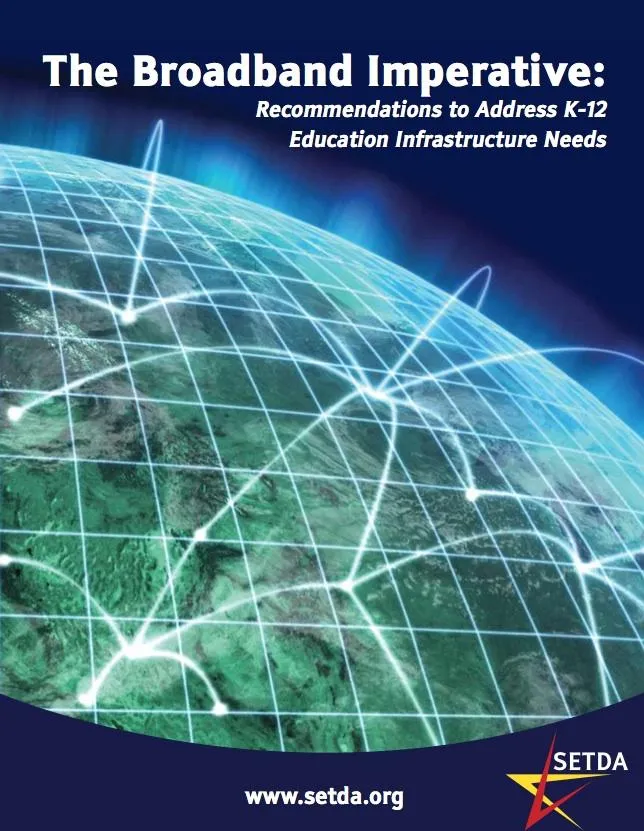Schools need more, faster broadband, say tech educators

"It is a simple fact that access to high-speed broadband is now as vital a component for K-12 school infrastructure as electricity, air conditioning, and heating." That's the conclusion of The Broadband Imperative: Recommendations To Address K-12 Education Infrastructure Needs, a new report from the State Educational Technology Directors Association (SETDA).
SETDA represents education technology leadership, and its conclusion is that in the face of increasing Web-based educational technology, schools will need 100 Mbps for each 1000 students and personnel by the 2014-2015 school year.
That means, in many cases, an increase in both technology awareness and in funding. Because, a 2010 federal survey found that while most schools had broadband access, "nearly 80% of respondents reported their broadband connections were inadequate to meet their current needs."
The report authors concede that the federal government has, since 2008, invested billions in technology infrastructure. And that although federal leadership and public-private partnerships have helped to draw attention to the shortfall in school broadband, "recent initiatives and programs have in no way resolved the national issue of inadequate and inequitable broadband access for learning in K-12 schools and homes."
According to one of The Broadband Imperative authors, Christine Fox, increased investment in school broadband isn't optional. "Students," she said, "shouldn't go to school and wonder if they turn on the light, is it going to dim the light in another room? They also shouldn't wonder, if they go to download a video, is it going to slow the access to the classroom across the hall?"
The Broadband Imperative: Recommendations To Address K-12 Education Infrastructure Needs (SETDA, May, 2012)
Education Group: Schools Need 100 Mbps per 1,000 Broadband Users (PCmag.com, May 21, 2012)
CWA members oppose AT&T’s attempts to stop serving rural and low-income communities in California
CWA urges FCC to deny industry attempts to loosen pole attachment standards
CWA District 6 reaches agreement with AT&T Mobility



